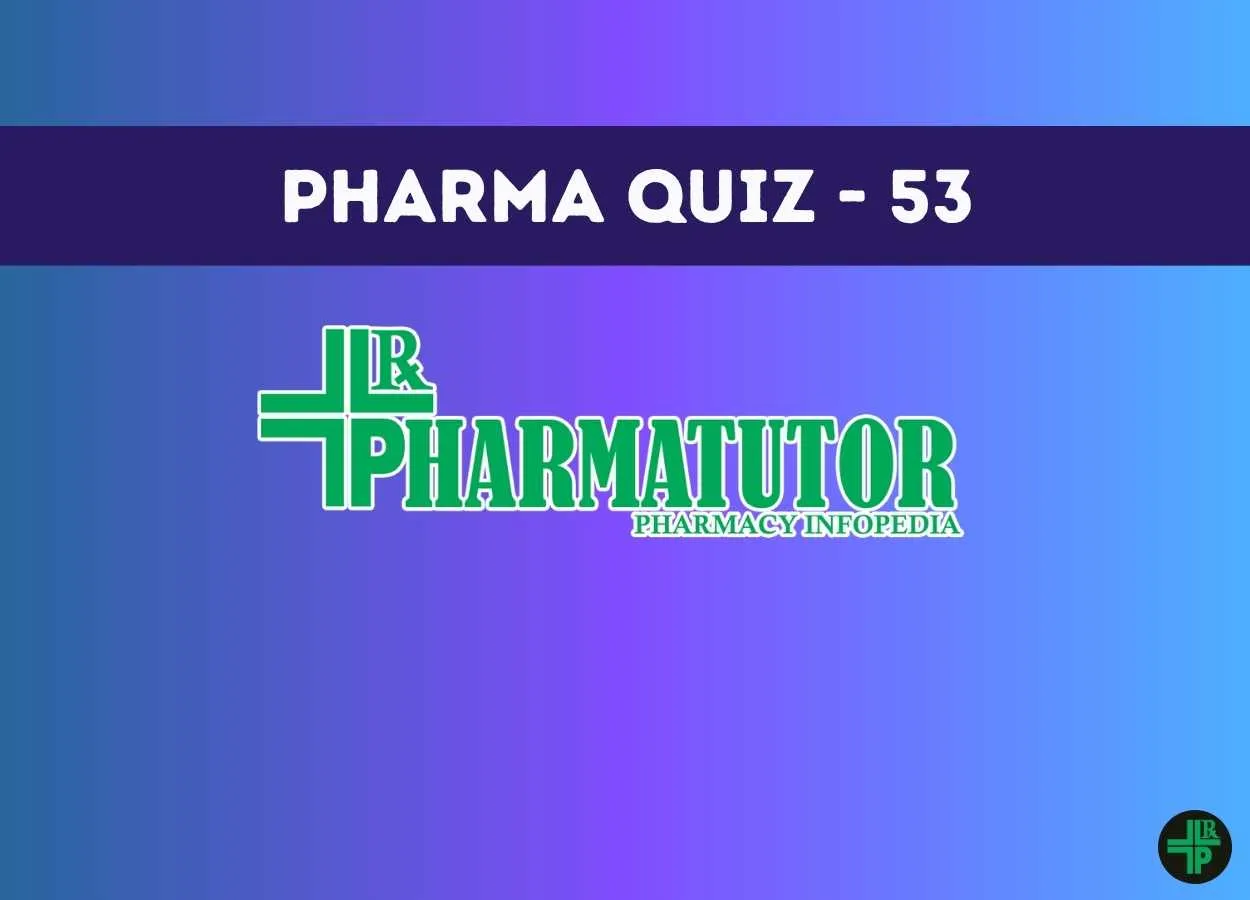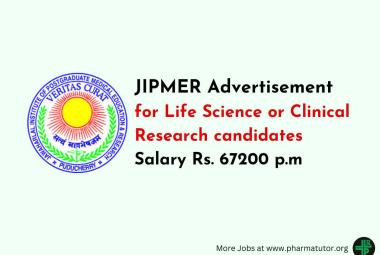1. Which of the following factors most significantly affects the bioavailability of a poorly water-soluble drug in an oral solid dosage form?
A. Tablet hardness
B. Particle size reduction
C. Lubricant concentration
D. Compression pressure
2. The Higuchi model for drug release from a matrix system assumes which of the following conditions?
A. The drug concentration in the matrix is less than its solubility
B. The rate of dissolution is faster than diffusion
C. The system is diffusion-controlled
D. The drug is released by zero-order kinetics
3. Which of the following drugs acts as a partial agonist at β-adrenergic receptors?
A. Propranolol
B. Pindolol
C. Atenolol
D. Metoprolol
4. Which of the following is not a characteristic feature of Phase II metabolism?
A. Involves conjugation reactions
B. Generally produces more polar metabolites
C. Always leads to inactive metabolites
D. Requires cofactor supply like UDPGA, PAPS, or acetyl-CoA
5. The molar absorptivity (ε) in Beer-Lambert law depends on which of the following factors?
A. Concentration of analyte
B. Path length
C. Nature of absorbing species and wavelength
D. Solvent refractive index only
6. In non-aqueous titration, the solvent glacial acetic acid is used because:
A. It acts as a proton acceptor for weak bases
B. It acts as a leveling solvent for strong acids
C. It has a high dielectric constant
D. It increases the dissociation of weak acids
7. The alkaloid Ajmalicine is biosynthetically derived from which pathway?
A. Shikimic acid pathway
B. Acetate pathway
C. Indole pathway (tryptophan derived)
D. Mevalonate pathway
8. The organized drug which shows calcium oxalate crystals in parenchymatous cells belongs to:
A. Senna
B. Datura
C. Rhubarb
D. Nux vomica
9. Under the Drugs and Cosmetics Rules, 1945, which Schedule specifies the requirements for Good Laboratory Practices (GLP) applicable to non-clinical testing of drugs?
A. Schedule M
B. Schedule N
C. Schedule U
D. Schedule L1
10. Which section of the Drugs and Magic Remedies (Objectionable Advertisements) Act, 1954 prohibits misleading advertisements?
A. Section 3
B. Section 4
C. Section 6
D. Section 8
11. The replacement of hydrogen by deuterium in a drug molecule primarily affects which of the following properties?
A. Lipid solubility
B. Binding affinity
C. Rate of metabolism
D. pKa value
12. Which of the following antibiotics contains a β-lactam ring fused with a five-membered thiazolidine ring?
A. Penicillin G
B. Cephalexin
C. Cefotaxime
D. Carbapenem
13. In fluidized bed drying, the minimum fluidization velocity depends mainly on:
A. Air humidity
B. Bed height
C. Drying temperature only
D. Particle density and size
14. The efficiency of a cyclone separator is inversely proportional to which factor?
A. Particle size
B. Gas velocity
C. Viscosity of gas
D. Density difference between particle and gas
15. The rate-limiting enzyme in cholesterol biosynthesis is:
A. HMG-CoA reductase
B. Acetyl-CoA carboxylase
C. Mevalonate kinase
D. Squalene synthase
Answers and Explanations
1. B. Particle size reduction
→ Smaller particles increase surface area, enhancing dissolution and bioavailability of poorly soluble drugs.
2. C. The system is diffusion-controlled
→ Higuchi model assumes drug release is governed by diffusion through a matrix, not by dissolution or zero-order kinetics.
3. B. Pindolol
→ Pindolol is a β-blocker with intrinsic sympathomimetic activity, acting as a partial agonist.
4. C. Always leads to inactive metabolites
→ Some conjugates (e.g., morphine-6-glucuronide) remain active; thus, not all Phase II products are inactive.
5. C. Nature of absorbing species and wavelength
→ ε is characteristic of the substance and the wavelength, independent of path length or concentration.
6. A. It acts as a proton acceptor for weak bases
→ Glacial acetic acid acts as an acidic solvent (proton donor) favoring titration of weak bases.
7. C. Indole pathway (tryptophan derived)
→ Ajmalicine is an indole alkaloid derived from tryptophan through the indole pathway.
8. C. Rhubarb
→ Rhubarb shows calcium oxalate crystals; used as a purgative drug.
9. D. Schedule L1
→ Schedule L1 of the Drugs and Cosmetics Rules, 1945, lays down the Good Laboratory Practice (GLP) requirements for laboratories conducting non-clinical safety testing of drugs.
It includes detailed provisions related to organization, personnel, SOPs, test systems, equipment calibration, and data handling.
10. B. Section 4
→ Section 4 prohibits misleading advertisements for drugs and remedies.
11. C. Rate of metabolism
→ Deuterium substitution reduces rate of oxidative metabolism due to the kinetic isotope effect.
12. A. Penicillin G
→ Penicillins have a β-lactam ring fused to a thiazolidine ring; cephalosporins have a dihydrothiazine ring.
13. D. Particle density and size
→ Minimum fluidization velocity depends on particle size, density, and fluid properties.
14. A. Particle size
→ Smaller particles are harder to separate; thus, efficiency decreases as particle size decreases.
15. A. HMG-CoA reductase
→ This enzyme converts HMG-CoA to mevalonate — the rate-limiting step in cholesterol biosynthesis.
JOIN OUR GPAT TEST SERIES & GET STUDY MATERIAL >>
FIND MORE PHARMA QUIZ >>
IF YOU HAVE CREATED ANY SUCH QUIZZES, YOU CAN SHARE IT WITH ALL PHARMAMATES OVER HERE.
SEND YOUR QUIZZES WITH YOUR NAME AND PROFESSIONAL DETAILS TO admin@pharmatutor.org









